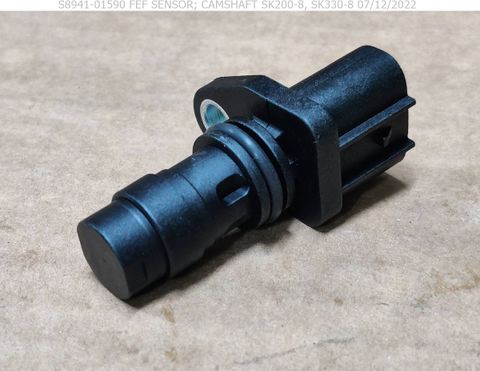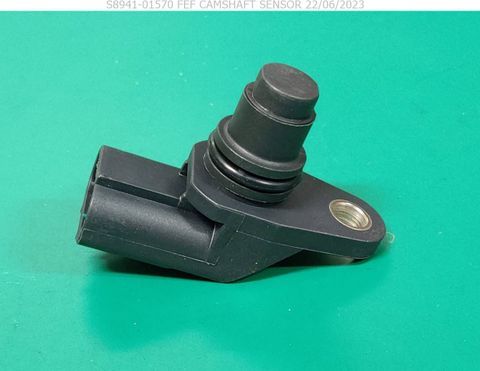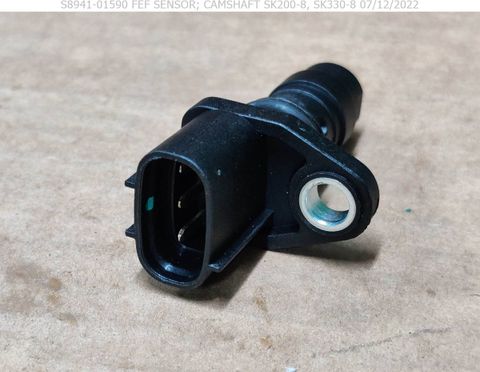CAMSHAFT SENSOR
価格:
R.F.Q
Share Product:
詳細
A non-functional camshaft position sensor in an engine can cause a range of significant issues affecting performance, efficiency, and overall drivability. The camshaft sensor is crucial for monitoring the position and speed of the camshaft and sending this information to the engine control unit (ECU). Here are common problems associated with a faulty camshaft sensor:
1. Engine Performance Issues
- Poor Acceleration: The engine may struggle to accelerate smoothly due to incorrect timing adjustments.
- Rough Idling: The engine might idle roughly or stall because the ECU cannot accurately control fuel injection and ignition timing.
- Engine Hesitation: The vehicle may hesitate or stumble during acceleration due to incorrect air-fuel mixture and timing.
2. Starting Problems
- Hard Starting: The engine may have difficulty starting or may not start at all if the sensor fails to provide accurate data to the ECU.
- No Start Condition: In some cases, a completely failed camshaft sensor can prevent the engine from starting.
3. Check Engine Light Activation
- Error Codes: The ECU may detect the faulty sensor and trigger the check engine light. Diagnostic trouble codes (DTCs) related to the camshaft sensor will be logged.
- Frequent Warnings: Persistent sensor issues can cause the check engine light to illuminate frequently, requiring repeated diagnostics.
4. Reduced Fuel Efficiency
- Increased Fuel Consumption: A faulty sensor can cause the engine to run inefficiently, leading to increased fuel consumption.
- Frequent Refueling: You may notice more frequent trips to the gas station due to poor fuel economy.
5. Engine Misfires
- Misfire Codes: The engine may misfire due to incorrect timing and fuel delivery, leading to diagnostic trouble codes for misfires.
- Rough Running: Misfires can cause the engine to run roughly, particularly under load or during acceleration.
6. Transmission Issues
- Shifting Problems: Some vehicles' transmissions rely on accurate camshaft data for optimal shifting. A faulty sensor can cause rough or delayed shifts.
- Reduced Performance: Transmission performance may be affected, leading to decreased vehicle performance and drivability.
7. Increased Emissions
- Higher Emissions: Incorrect timing and fuel mixture can increase the emission of harmful pollutants, potentially causing the vehicle to fail emissions tests.
- Catalytic Converter Damage: Prolonged misfires and rich running conditions can damage the catalytic converter, leading to expensive repairs.
8. Engine Overheating
- Improper Timing: Incorrect ignition timing can cause inefficient combustion, potentially leading to engine overheating.
- Component Damage: Overheating can cause serious damage to engine components, leading to costly repairs.
9. Limp Mode Activation
- Reduced Power: The ECU may activate limp mode to protect the engine from damage. This mode significantly reduces engine power and limits vehicle speed.
- Safety Feature: Limp mode allows you to drive the vehicle to a repair shop but with limited performance.
10. Increased Maintenance Costs
- Frequent Repairs: Persistent issues with the camshaft sensor can lead to frequent repairs and increased maintenance costs.
- Additional Diagnostics: Identifying and resolving issues caused by a faulty sensor may require additional diagnostic work, increasing labor costs.
Summary
A non-functional camshaft position sensor can cause engine performance issues, starting problems, check engine light activation, reduced fuel efficiency, engine misfires, transmission issues, increased emissions, engine overheating, limp mode activation, and increased maintenance costs. Addressing a faulty camshaft sensor promptly by diagnosing and replacing it is essential to maintain optimal engine performance, fuel efficiency, and emissions control. Regular inspection and maintenance can help prevent these problems and ensure the vehicle operates smoothly.
仕様書
| キーワード | |
| ブランド | |
| 起源 | MY |



